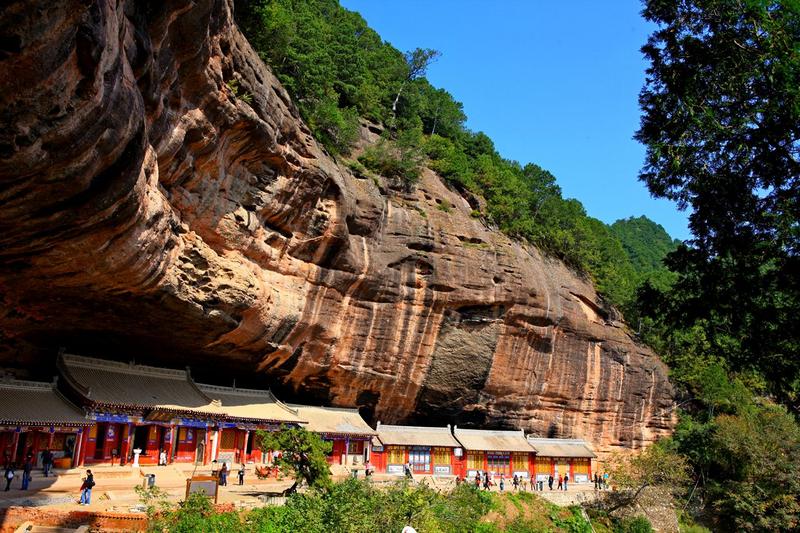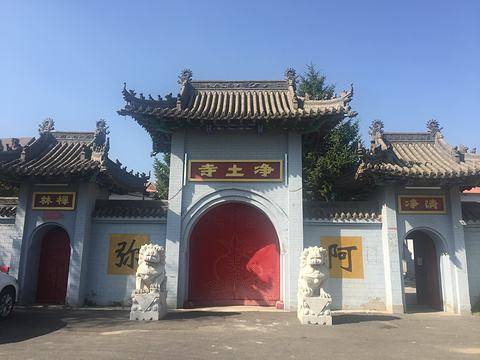Located at the foot of Tianjing Mountain in the northern part of Qinzhou District, Tianshui City, Gansu Province, it is also known as Chongning Temple. It is named for the clear and fragrant water on the mountain. During the Yuan Dynasty, Liang Gongbi, the instructor of Qinzhou, recited 'The mountain temple in the northern suburbs, the famous mountain Yuquan' when building the temple. The buildings rise continuously along the mountain terrain, distributed in mountain valleys and cliff walls. It is a Taoist holy site in the Tianshui area.
Currently the largest and best-preserved Fuxi Temple in China, it is a Ming Dynasty building commemorating Fuxi, one of the ancient 'Three Sovereigns'. The temple is built along the street, with multiple courtyards nested within each other, featuring four entrances and exits, and a spacious and deep layout. It is located on Fuxi Road in Xiguan, Qinzhou District, Tianshui City. The new building complex consists of 76 structures. The entire building faces south with its back to the north. The structures such as the archway, main gate, ceremonial gate, Xiantian Hall, and Taiji Hall are arranged along the central axis in a layered and solemn manner. The side rooms and stele corridors are symmetrically distributed along the horizontal axis, showcasing a distinct traditional Chinese architectural style. Because Fuxi is considered the first emperor in ancient legends, this architectural complex is designed in a palace style and is the largest Fuxi worship complex in the country.
Hu's Ancient Residential Buildings
Located in the center of Tianshui City, Hu's Residence consists of two ancient architectural complexes, the South Residence and the North Residence, which face each other across the street. The pioneers were Hu Laijin and Hu Xin, father and son, both famous ministers of the Ming Dynasty, and the locals referred to them as 'the father and son of the hometown.' Since Hu's Residence was the private residence of Hu Laijin and Hu Xin, its form is basically built according to the traditional Chinese Siheyuan (courtyard house) style. The traditional residence forms a planar layout from the main house to the central courtyard, creating a Siheyuan. Although it is a Siheyuan, Hu's Residence is different from the Siheyuan in Beijing. Whether it is the main house or the wing rooms, the Siheyuan in Beijing adopts a saddleback structure, while in Hu's Residence, except for the main house and the inverted seat which adopt a saddleback structure, the wing rooms adopt a Tianshui residential structure, commonly known as 'one slope water,' which has a strong local characteristic. In addition to the residential features, one can also see many traces of habitation inside, vividly recreating the appearance of large family gatherings in the northwest region at that time.
Located in the southern part of Tianshui City, Gansu Province, Nanguo Temple is known as the first famous temple in Longyou. It is lush with trees, ancient cypresses towering into the sky, beautiful scenery, and filled with the sounds of birds and the fragrance of flowers. It is one of the eight scenic spots of Tianshui, named 'Ancient Cypresses of Nanshan'. The temple was built over a thousand years ago and has been a place of interest for poets and scholars throughout the ages. In 759 AD, the famous Tang Dynasty poet Du Fu, while residing in Qinzhou (today's Tianshui), wrote more than a hundred poems praising the area. Among them, the most famous is: 'On the hill stands Nanguo Temple, by the water flows Beiliu Spring. Old trees grace the empty courtyard, clear channels run through the town. Autumn flowers bloom at the base of the perilous rocks, the evening scene lies beside the bell. Looking up, one feels the sorrow of life, the stream's wind blows gently.'
Jingtu Temple
Jingtu Temple, also known as Manshu Temple, is located in the back mountain of the Xianren Cliff Scenic Area in Tianshui. Surrounded by mountains and filled with ancient pines, the temple is often accompanied by the sound of wind rustling through the pines, known as 'Jingtu Pine Waves'. It is one of the ten scenic spots in Qinzhou. The temple was completely demolished in the late 1970s and later restored and expanded. Around Jingtu Temple are eighteen peaks, forming the famous local spectacle known as the 'Eighteen Arhat Mountains'. The peaks resemble lotus petals, with all eighteen green peaks converging towards the main peak of Manjusri, showcasing the natural wonder of the 'Green Sea and Precious Lotus'. The peaks are varied and unique, some resembling Maiji Mountain, others like Xianren Cliff. People refer to it as 'the extraordinary peaks within a thousand miles, all gathered in one's embrace; the spiritual essence of the hundred-mile scenic area, all contained within Jingtu.'













